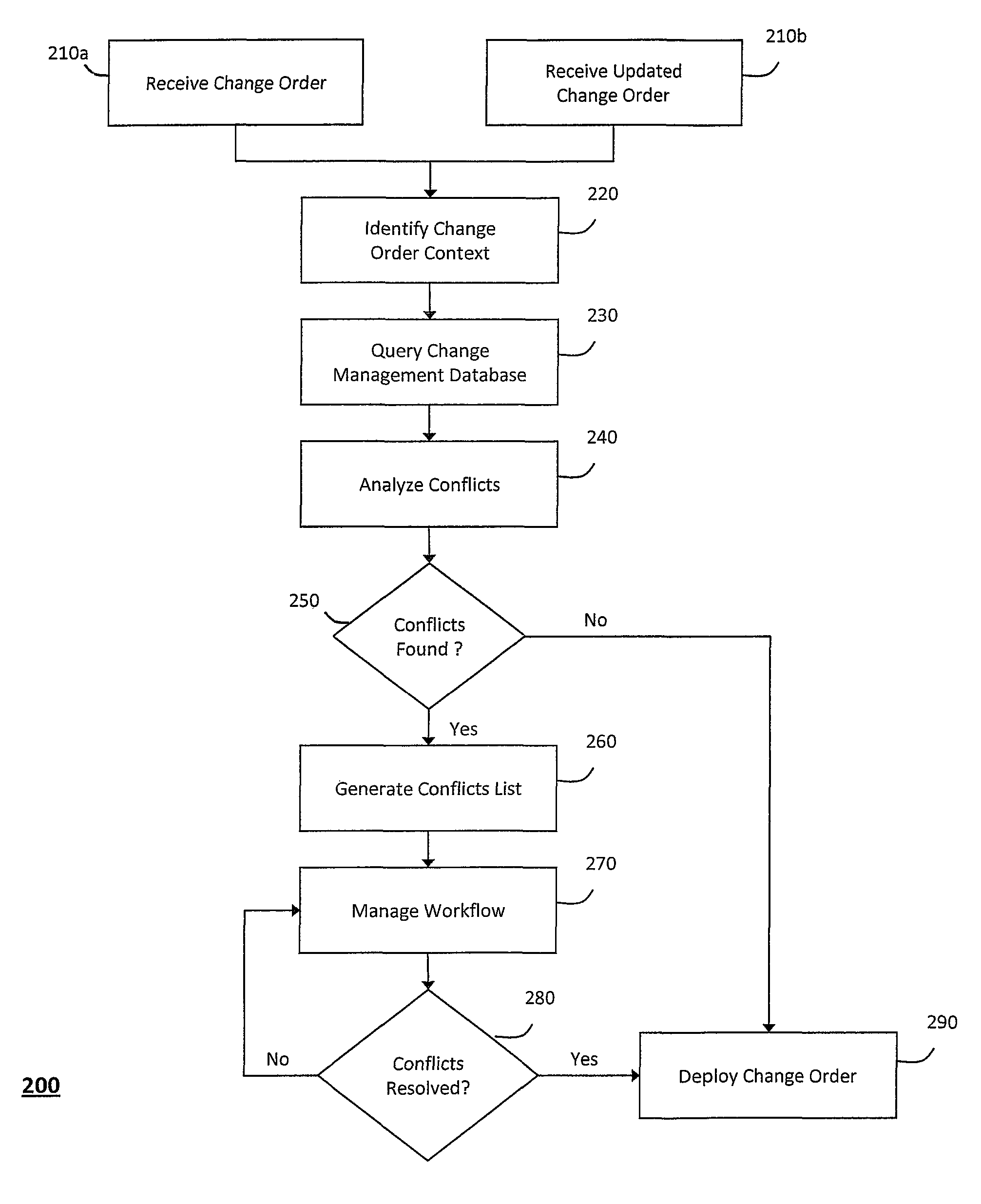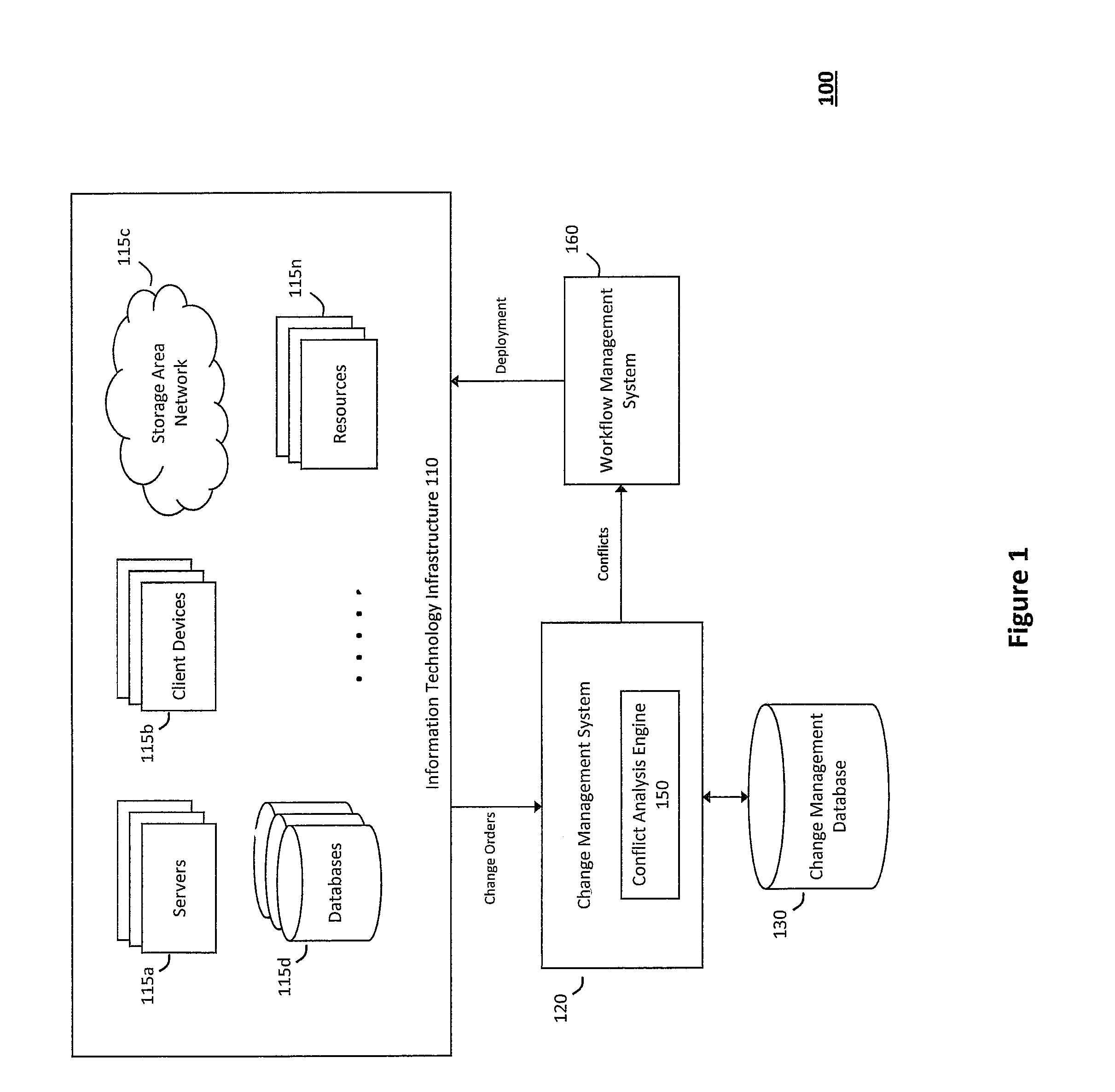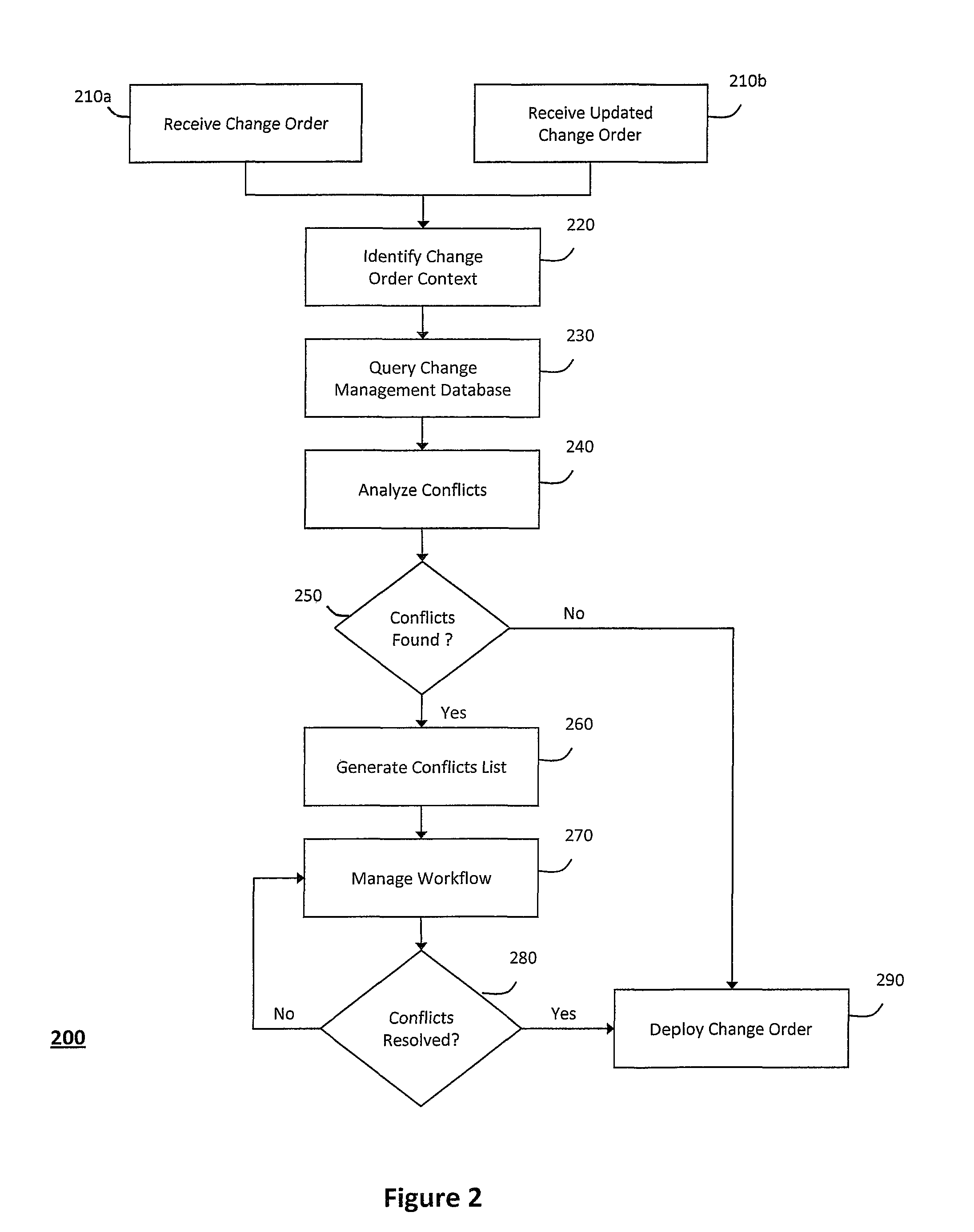System and method for automatically detecting, reporting, and tracking conflicts in a change management system
a change management system and automatic detection technology, applied in the field of automatic detection, reporting and tracking conflicts in the change management system, can solve the problems of limiting visibility, disconnection of change processes, and typically having little or no visibility into
- Summary
- Abstract
- Description
- Claims
- Application Information
AI Technical Summary
Problems solved by technology
Method used
Image
Examples
Embodiment Construction
[0014]According to one aspect of the invention, FIG. 1 illustrates an exemplary system 100 for automatically detecting, reporting, and tracking conflicts in a change management system 120. In particular, the change management system 120 illustrated in FIG. 1 may provide an integrated solution to manage risk to a business that may occur from changes to an information technology infrastructure 110, which may generally include various information technology resources 115n. For example, the information technology infrastructure 110 associated with any particular business may include various servers 115a, client devices 115b, storage area networks 115c, databases 115d, and other information technology resources 115n. Moreover, various relationships may exist among the information technology resources 115n provided in the information technology infrastructure 110, whereby managing the information technology resources 115n and the relationships among the information technology resources 11...
PUM
 Login to View More
Login to View More Abstract
Description
Claims
Application Information
 Login to View More
Login to View More - R&D
- Intellectual Property
- Life Sciences
- Materials
- Tech Scout
- Unparalleled Data Quality
- Higher Quality Content
- 60% Fewer Hallucinations
Browse by: Latest US Patents, China's latest patents, Technical Efficacy Thesaurus, Application Domain, Technology Topic, Popular Technical Reports.
© 2025 PatSnap. All rights reserved.Legal|Privacy policy|Modern Slavery Act Transparency Statement|Sitemap|About US| Contact US: help@patsnap.com



